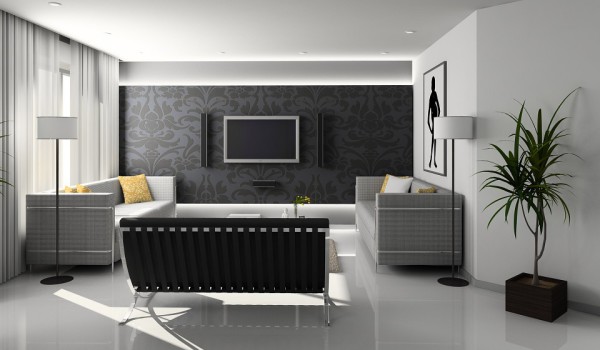

When considering the layout of an interior space, the stairway can at times be conceived of as an afterthought. However, both the stairs and the area surrounding them can truly enhance the desired environment of an interior space. The choice of lighting, color scheme, finishes, and objects in a stairway should reflect something about the larger space. Stairways are also a critical part of any home or interior space, because they provide a transition. If the look and feel of the spaces connected by the stairs are completely different, then the stairs can provide a great opportunity to better link the two. Stairways also provide a great place to showcase art. If you are in the process of building a new staircase or simply looking to revamp your current staircase, consider the following ideas.
Nancy Price Interior Design created the above look a while back. Pairing antiques with a neutral wall and floor palette create a sense of serenity and hint at the ethereal leading into the attached room. Keeping spaces light, bright and clean is a signature element of all spaces Nancy Price designs. Keeping things bright overall means that you can add flourishes here and there that are dynamic and interesting without overwhelming the eye. The key always comes back to balance and composition
Traditional types of stairs:
Straight Flight of Stairs– These stairs don’t have any winders or landings, and are somewhat dangerous the more steps there are.
Spiral and Helical Stairs -Spiral stairs wind around a newel. A newel is also known as the central pole. Spiral stairs usually have a handrail on the outer side only, and on the inner side just the central pole. Most spiral stairs have very high rises and a very short going in order to maintain headroom.
Alternating Tread Stairs
Where there is insufficient space for the full run length of normal stairs, alternating tread stairs may be used. Alternating tread stairs allow for safe forward-facing descent of very steep stairs. The treads are designed such that they alternate between treads for each foot: one step is wide on the left side; the next step is wide on the right side. There is insufficient space on the narrow portion of the step for the other foot to stand, hence the person must always use the correct foot on the correct step. The slope of alternating tread stairs can be as high as 65 degrees as opposed to standard stairs which are almost always less than 45 degrees. The advantage of alternating tread stairs is that people can descend face forward.
In the US, the general rule is 7-11 ( this is a 7 inch rise and an 11 inch run). However, some people will use a run of only 9 inches.